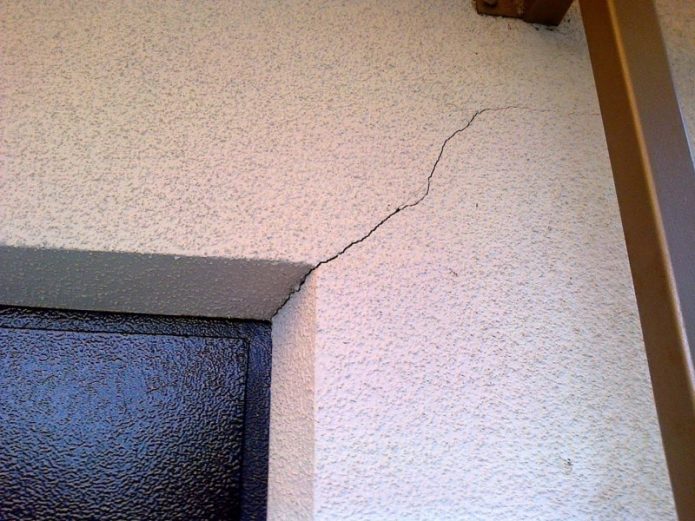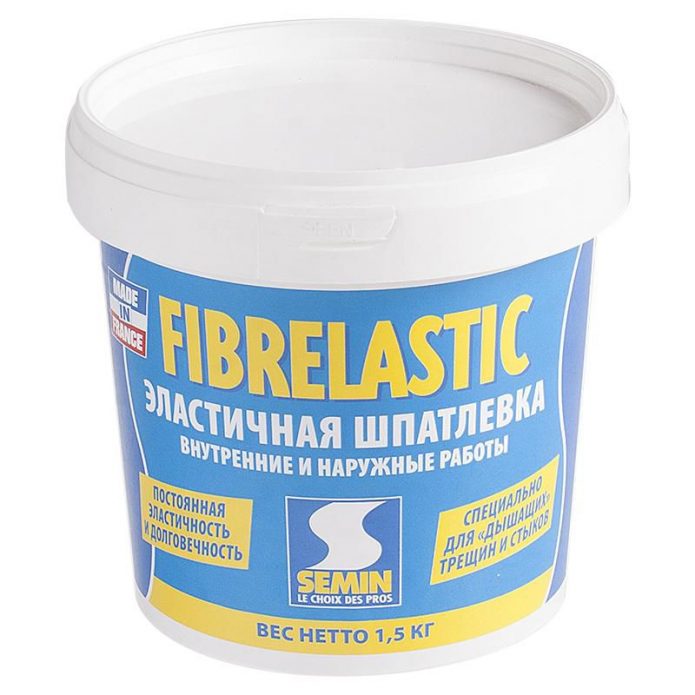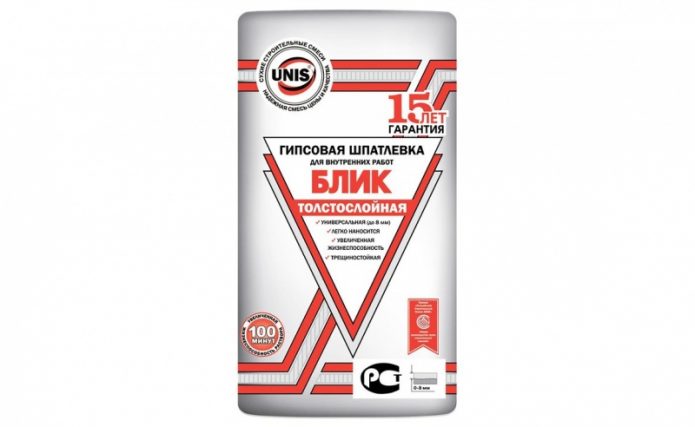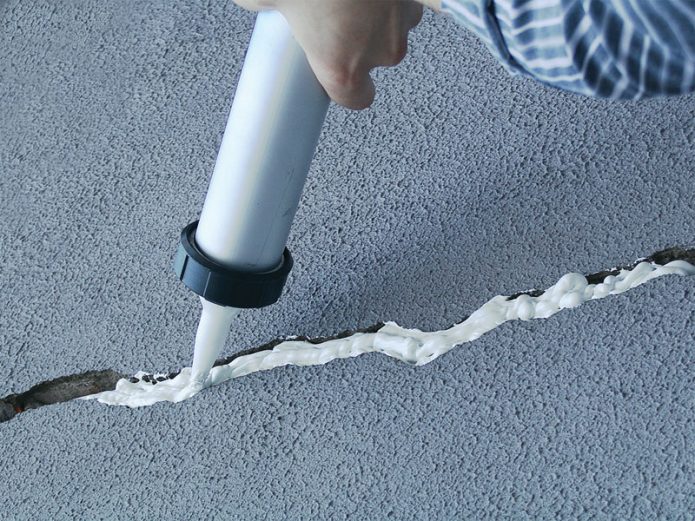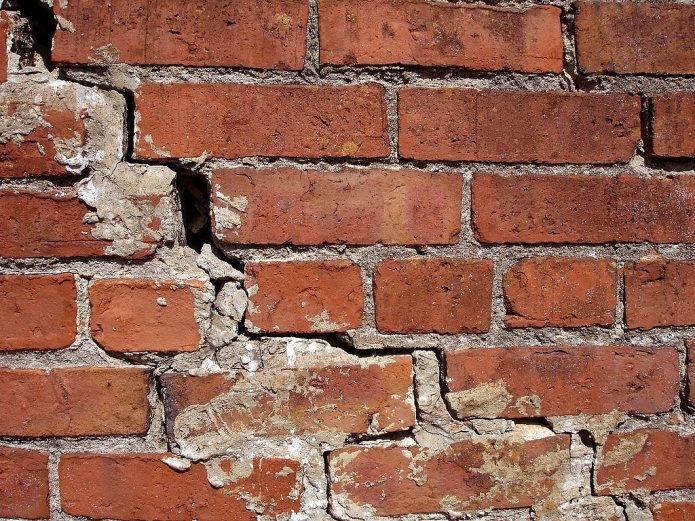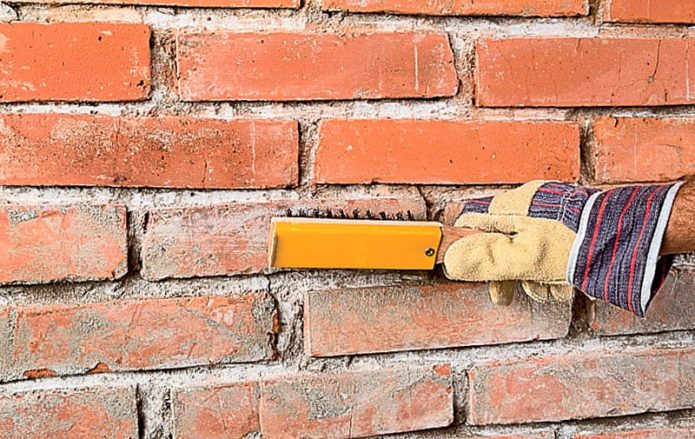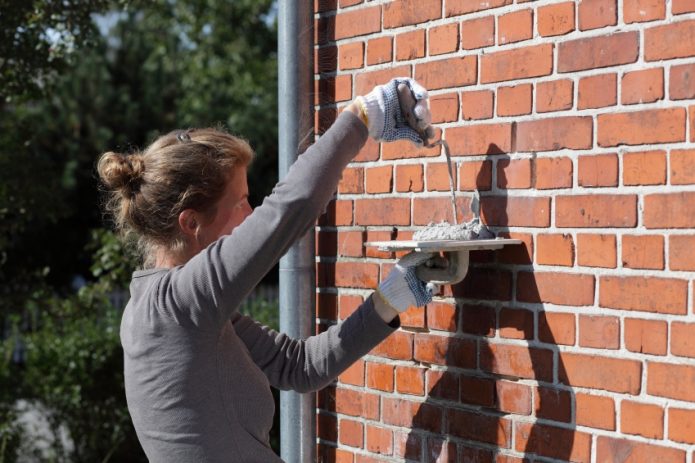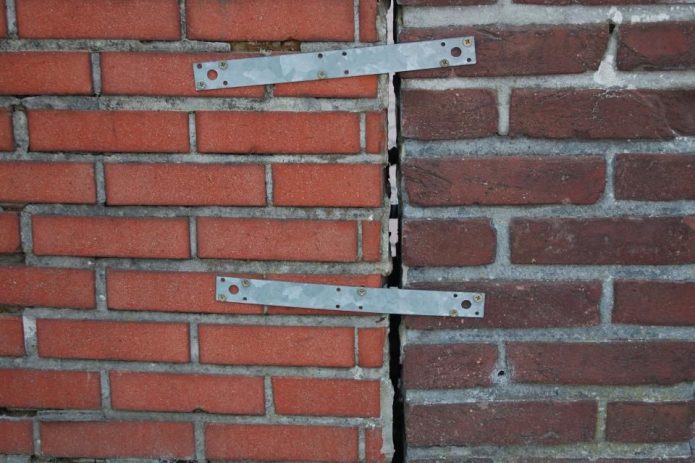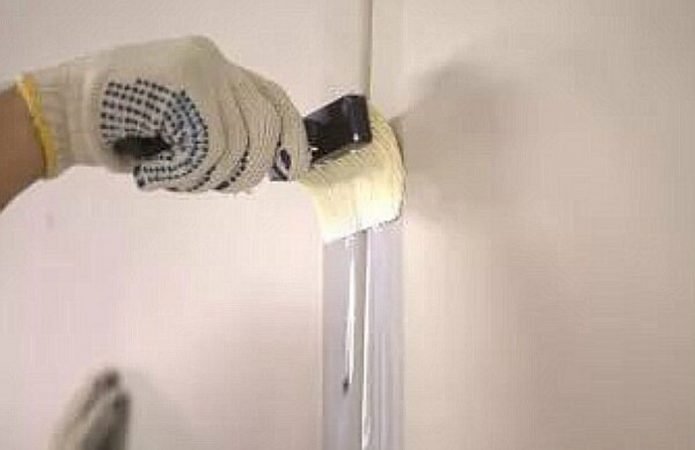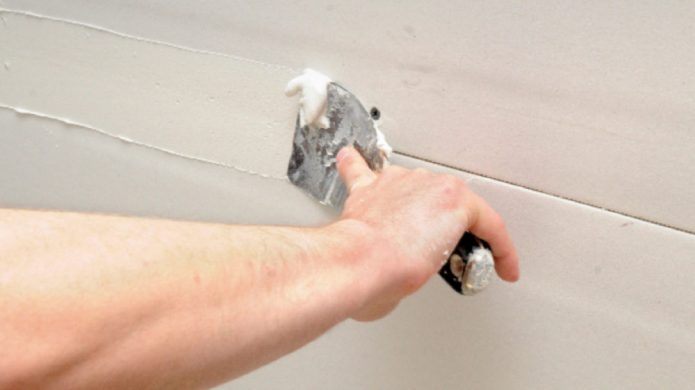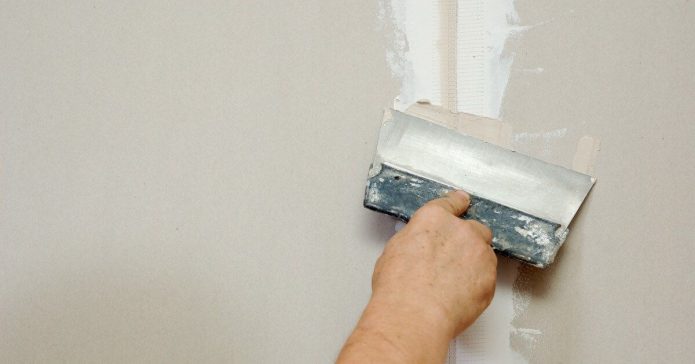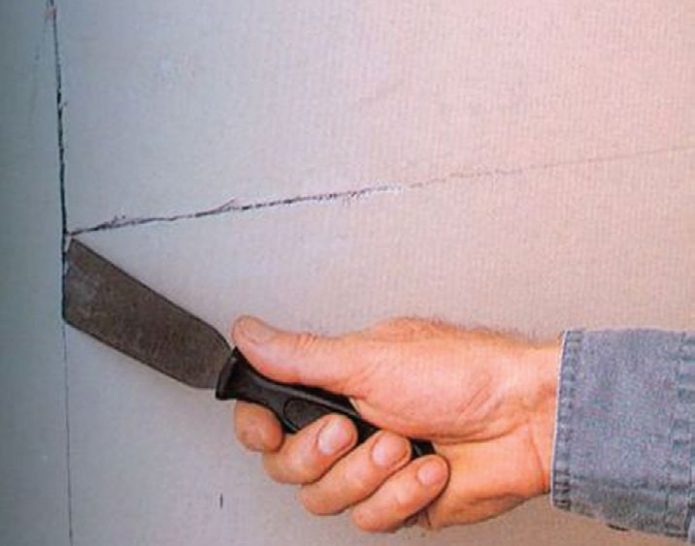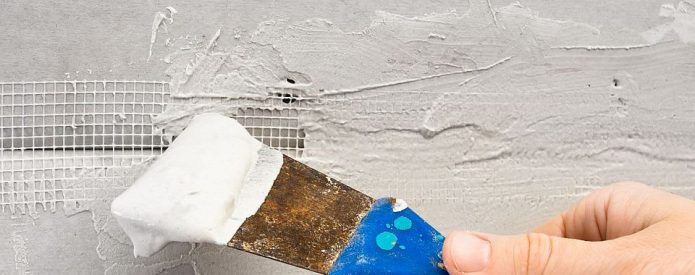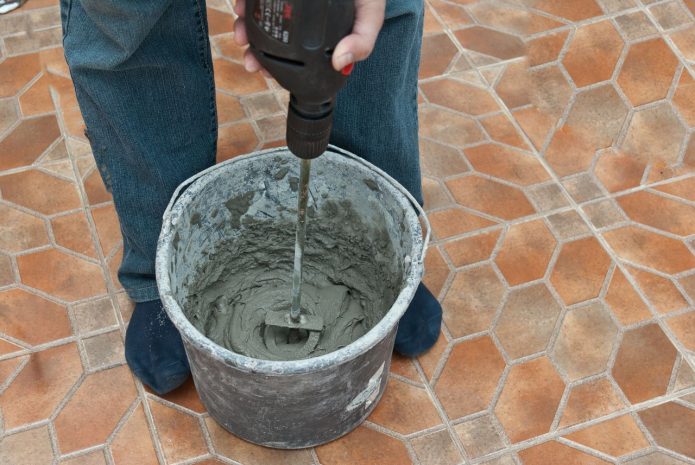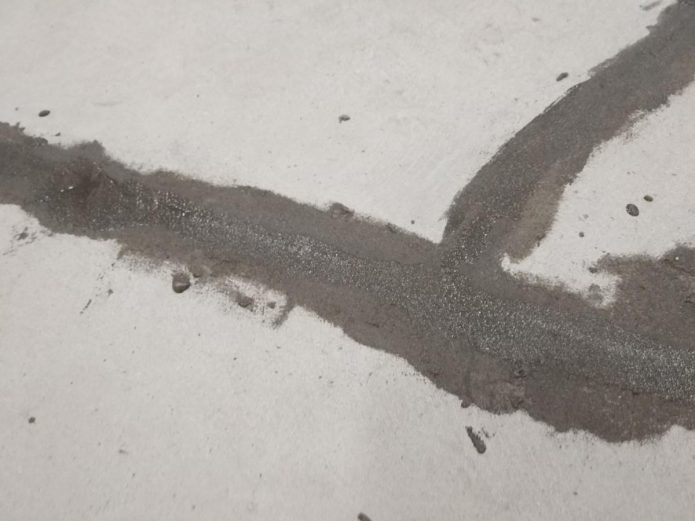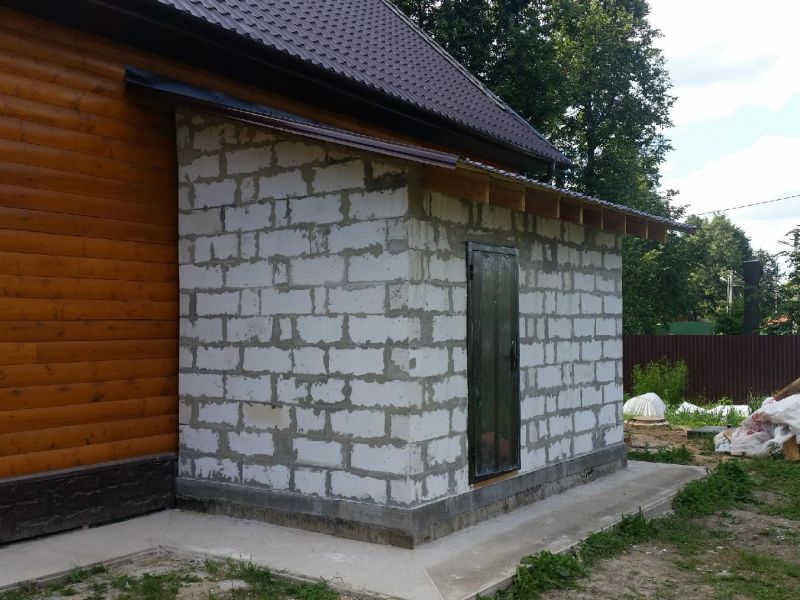How to repair a crack in a wall: a complete guide
Not even six months had passed from buying a new house, and cracks suddenly appeared on the wall - you should not be upset, you need to evaluate the nature of the damage, study the causes and options for solving this problem. Typically, such defects are superficial in nature, they will not lead to the destruction of the main structures, but it is better to correct the situation immediately.
Content
Causes of cracks in the wall
External cracks can occur both in new buildings and in old houses under the influence of various factors:
- as a result of deformations and distortions of the supporting structures during natural shrinkage of the soil under the base and stabilization of the foundation;
- due to the close occurrence of groundwater, errors in the design of the drainage system;
- from high loads on the walls with incorrect construction calculations and violation of the technology of construction of buildings;
- improper preparation or use of materials;
- from constant vibrations during traffic, wind;
- due to constant changes in temperature and humidity.
Internal cracks are usually small and appear on the surface of the finishing layers for the following reasons:
- if the humidity regime is not observed during the hardening and drying of the concrete screed on the floor or plaster on the walls;
- due to improper composition, for example, insufficient plasticizers in concrete mortar.
If you do not take measures to eliminate, then even small cracks, the so-called cobwebs, eventually spread over the entire wall and can lead to shedding of the finish layer, peeling off fragments of wallpaper. In the case when the width of the crack exceeds 0.5 cm, it is advisable to seek the advice of specialists. Through the cracks are the most dangerous, often they are formed as a result of an earthquake, a fall of a tree, carried out next to the house of construction work. In serious cases of through wall ruptures, the house is considered emergency.
What building materials are suitable for repairing damage
Today, in any supermarket you can see the materials for filling cracks, they are designed to work with various types of surfaces. Both universal mixes, and special for external or internal works are on sale.
Some of the most used types of putty from different manufacturers:
- Neomid Professional - to eliminate both street and internal damage. This putty putty is distinguished by its versatility, it is suitable for various materials. The content of the reinforcing fibers allows you to work with deep and wide cracks.
Semin Fibrelastic - universal putty with increased elasticity, can be used both indoors and outdoors. It withstands significant loads during the expansion and contraction of "breathing" cracks, does not lose its qualities when temperature and humidity changes.
- Profix - easy to apply and has ductility and high adhesion to most materials from which the walls are built. The assembly-putty mixture works perfectly on the street and is suitable for self-repair of small cracks, it has the possibility of textured application.
Unis Flare-thick - plaster putty, manufacturers give a guarantee for joints from Unis - 15 years. It is used to correct internal defects.
You can prepare a mixture for filling cracks and yourself.
Cement-sand mortar is made at the rate of 3 parts of sand per 1 part of cement, with large or through breaks in the walls, crushed stone can be added, and for plasticity add liquid soap in the amount of 30 g per 15 l of concrete or silicate glue (1 l per 15 l of solution) or PVA (100 g per 15 l of the mixture). To improve the properties of the finished putty, you can use the mixing of fiber reinforcing fibers and finished plasticizers.
It is used for external cracks in masonry, concrete, gas block. Its strength can be considered an advantage of this material, and low elasticity, even with plasticizing additives, can be considered a disadvantage. Moreover, the finished solution cannot be stored for a long time.
Silicone sealant does not need to be made by yourself; it is sold ready-made in special tubes and applied using a glue gun with a thin tip, which is convenient to fill in the gaps. Advantages of silicone - quick drying and high elasticity of the seam, moisture resistance. Among the shortcomings can be distinguished fragility and softness of the material. Silicone is used inside the house to eliminate small cracks.
Foam is used to fill the internal voids in cracked structures of aerated concrete or aerated concrete, its advantage in lightness and excellent thermal insulation. Minus mounting foam in softness and lack of strength, an additional coating of plaster is needed on top.
Crack repair methods
In order not to make a mistake in choosing a method for repairing cracks, you need to pay attention to the following points:
- the material from which the walls of the house were erected;
- amount, depth and width of damage;
- area and location of defects;
- the appointment of cracked walls.
If any cracks are found, it is first necessary to carry out work to prevent further spread and expansion, and only then to cover the gap, otherwise it will continue to grow.
Table: types of wall damage and methods for its elimination
| Distance between joints | A type | Repair Methods |
| Less than 5 mm | Shallow | Putty Putty |
| 5 to 10 mm | Average | DPS termination with mandatory alignment |
| More than 10 mm | Large | Cement mortar filling with crushed stone and reinforcement |
How to repair cracks yourself - step by step instructions
You can cope with the repair of small cracks on your own without the involvement of a construction team and additional costs. Having previously studied the intricacies of technology, as well as choosing the right tools and materials for the job.
On a brick wall
The most common material for laying walls is brick. If the damage is minor or medium, the repair should be carried out according to the following instructions:
- Make a joint with a hammer and a screwdriver; as a result, the gap will increase slightly.
- Completely clean the joint from dust and moisten the surface. Using a spatula or a construction trowel, apply cement mortar, carefully filling the depth of the crack and leveling the surface of the seam.
For large and through slots, the order of work will be different:
- To expand and clean the surface of the crack, as in the previous instruction, knock out the remnants of the old mortar.
- Drill holes for the dowels on both sides of the gap, insert the dowels.
- Apply surface with penetrating primer to increase adhesion of materials.
- Fill the cavity with a solution, pushing it deep and filling the voids.
- Lay the seam on top with a reinforcing mesh, screw the screws into the dowels.
- In more serious situations, tighten the crack with metal tires fixed with anchors or embedded elements.
- Plaster the mesh.A partial analysis of the old damaged masonry may be necessary, and then new bricks are inserted into a fresh mortar, so the masonry is restored and the wall is strengthened.
On a drywall partition wall
Usually the joints of drywall sheets crack, and if the crack goes along the sheet itself, there is a damage to the frame or deformation during installation.
Steps for filling GKL cracks:
- Peel and stitch sheet joints or cracks.
- Coat the edges of the sheets with a primer.
- Apply a small layer of putty.
- Press the reinforcing mesh or tape and press it into the surface of the seam.
- Align the entire layer and sand it thoroughly.
On a plastered surface
Cracks on the plaster are superficial and do not pose a threat to the construct, however, they spoil the appearance of the interior and creep in the form of a grid.
Stages of repairing small cracks:
- Use a hammer to tap the entire area of damage without sparing and knock off the exfoliated parts, remove the stucco and dust with a spatula.
- Go through the formed recess with a penetrating primer, which will strengthen the edges and improve adhesion or wet it with water.
- Fill the entire cavity with a solution or a special ready-made mixture, if necessary, lay a reinforcing mesh, fixing it on cloves or small screws.
- After the plaster layer has dried, apply a finishing putty, it is permissible to reinforce narrow cracks with a special tape.
On concrete
With the development of monolithic construction, concrete is becoming more and more popular, and more and more often the question arises of repairing concrete surfaces.
How to grind:
- Sift sand and cement to separate the smallest fraction. The smaller the particles, the smoother and more reliable the coating. Knead the grout.
- Prepare a gravy, securing a piece of fur on it, pick up a bucket of clean water.
- Dip a tepel into water, then apply a small portion of the solution to it with a spatula. Press the tool against the wall and rub the solution into the cracked area with circular motions, constantly wetting.
With the help of grinding, builders not only remove cracks, but also grind to a perfectly even state all the excavations and irregularities on the monolith or ordinary concrete. Large chips and cavities are perfectly bonded by epoxy together with a hardener and a reinforcing mesh or tape.
Even well-constructed walls are subject to gradual destruction over time, so the dream of building once and for all is unattainable in practice. The house will stand idle for a long time if the owners monitor the state of structural elements and identify defects on time. You can cope with a small repair to seal the formed cracks on your own, thereby preventing further damage from spreading.

